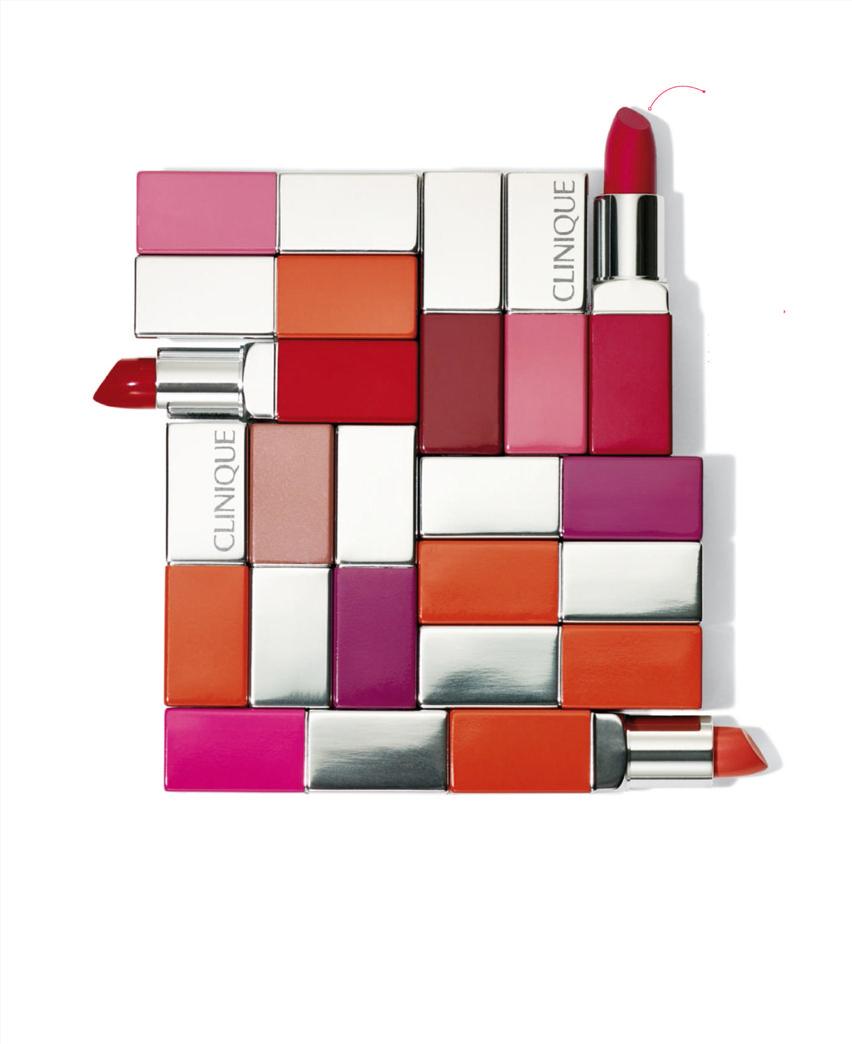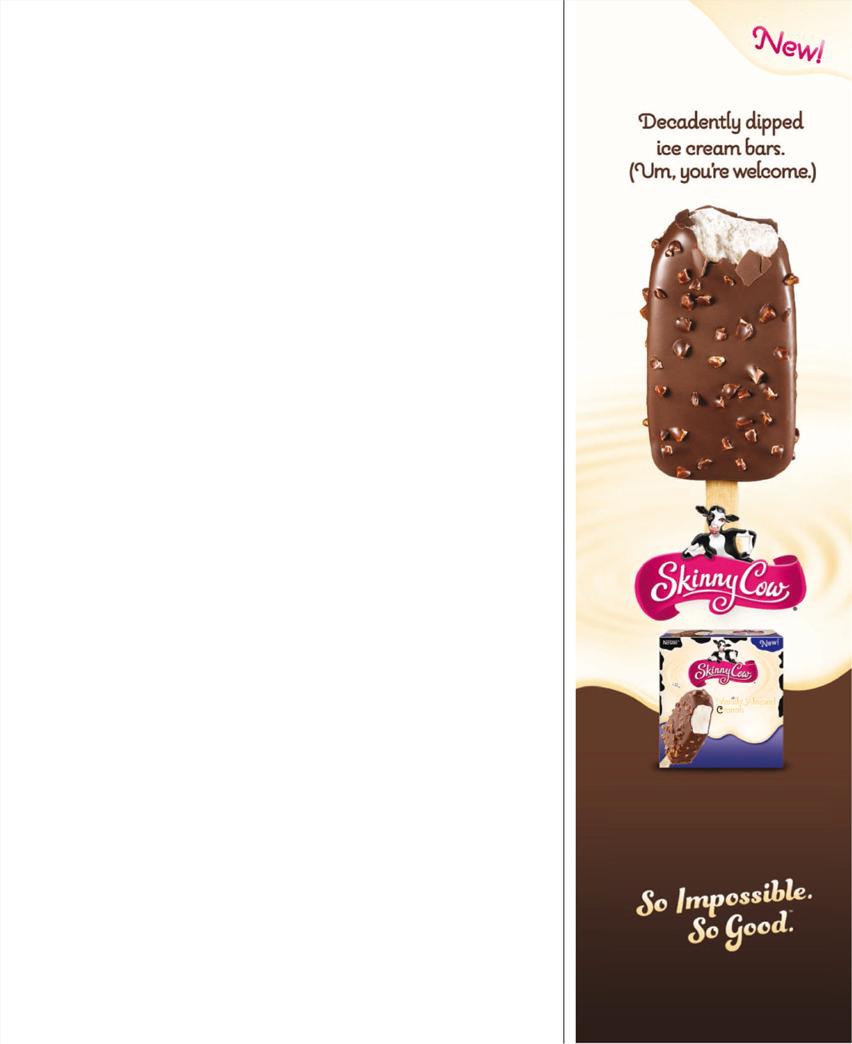
6 minute read
BEAUTY
from RS - June 2015
MEET THE BLOGGER:
JULIEANNA HEVER BRIGHT IDEAS
Advertisement
OFFERS
EVENTS
FINDS
GIVEAWAYS
Julieanna Hever is a registered dietitian whose private practice was founded almost 20 years ago in Los Angeles. Specializing in weight management, disease prevention, and sports nutrition, she is the host of Z Living Network’s What Would Julieanna Do?, author of the brand new The Vegiterranean Diet, and bestselling book, The Complete Idiot’s Guide to Plant-Based Nutrition, and co-author of The Complete Idiot’s Guide to Gluten-Free Vegan Cooking. She has been featured on The Dr. Oz Show, The Steve Harvey Show, Marie, with Marie Osmond, TEDxConejo, and Reluctantly Healthy, while lecturing extensively throughout the United States and beyond.
FACEBOOK: Plant-Based Dietitian
TWITTER: @plantdietitian
INSTAGRAM: julieannahever
PINTEREST: plantdietitian
YOUTUBE: Julieanna Hever
#CELEBRATESIMPLE
Whether it’s a quiet moment with your favorite magazine or exploring a new neighborhood with friends, sometimes the best things in life are the simplest. The makers of Kozy Shack® pudding believe simplicity is worth celebrating. They should know—their pudding is made from simple ingredients like milk, eggs, sugar, and rice. That’s why they want to reward you for the simple moments you enjoy every day.
By uploading a photo using #celebratesimple and following @KozyShack on Instagram, you’ll be entered for the chance to win a weekend for two to Nantucket and tickets to the Boston Pops concert courtesy of Kozy Shack® and Real Simple.*
*Winner must be able to travel August 7-9, 2015.
NO PURCHASE NECESSARY. Purchasing does not improve your chances of winning. The Real Simple Kozy Shack #celebratesimple Sweepstakes is open to residents of 48 contiguous United States, and the District of Columbia, age 21 or older at the time of entry. Void in AK, HI, Puerto Rico, and wherever else prohibited by law. Promotion begins at 12:01AM ET on 5/1/15 and ends at 11:59PM ET on 6/1/15. For entry details and Official Rules, see www.realsimple.com/ celebratesimple. Sponsor: TI Media Solutions Inc., 1271 Avenue of the Americas, New York, NY 10020.
FEEL FREE TO TAKE ON THE DAY WITH YOUR EYES WIDE OPEN
Not all drops for dry eye are created equal. Discover freedom from the symptoms of dry eye with an array of Systane gels, wipes, and drops to fit your every thirst-quenching need. The Systane family of products work with your natural tears to provide dry eye relief that lasts from sunup to shut-eye. Find your freedom at systane.com.
THINKTHIN
thinkThin stands for delicious, high quality protein that delivers energy — anytime, anywhere—so women can feel positive about their food choices. Each thinkThin bar contains only the best ingredients with no refined sugar or gluten. Learn more at thinkproducts.com/realsimple.

beauty
Problem spots
Suspicious moles aren’t the only sign of skin cancer. Here’s what you need to know about two all-too-common forms of the disease.
ANOTHER ZIT. That’s what Laura Williams thought in 2006 when she saw a tiny spot on her forehead near her hairline. Williams, who was 24 at the time, was no stranger to breakouts. But this one didn’t change size or color like a regular pimple, and when she tried popping it, it scabbed up and disappeared, then reappeared two weeks later. “That happened over and over again,” says the Georgetown, Texas, resident, now 33. “I finally realized that I needed to see a doctor.”
Over the next five years, because of job and insurance changes, she saw several physicians. Each dismissed the spot as eczema or actinic keratosis, which can be a precancerous condition. One doctor even tried to freeze it off with liquid nitrogen, yet the growth on her forehead refused to go away. In 2011, when a dermatologist admitted that the spot’s constant scabbing over was a classic sign of cancer, Williams insisted on having it biopsied.
The most common cancers
Melanoma gets a lot of attention— and for good reason. “Although it accounts for only about 4 percent of new skin cancers, malignant melanoma is responsible for 75 percent of all skin cancer deaths,” says dermatologist Elizabeth Hale, a vice president of the Skin Cancer Foundation. Melanoma can
Written by Kimberly Goad Illustrations by Ben Wiseman

beauty be fast and aggressive. An American dies of it every hour. Women under the age of 40 have a higher probability of developing it than any other cancer except breast cancer.
Even so, many women are in the dark about melanoma’s two more common cousins, squamous cell carcinoma (SCC) and basal cell carcinoma (BCC)—the latter of which Williams was diagnosed with. According to the American Cancer Society, SCC makes up about 20 percent of skin cancer diagnoses, while BCC accounts for nearly 80 percent and is the most common form of any cancer in men and women, period. And no matter what your skin color or race, you have a 40 to 50 percent chance of developing BCC or SCC by age 65, according to the Skin Cancer Foundation.
BCC and SCC tend to grow slowly and rarely spread to other parts of the body, the way melanoma often does. (Five years after it first surfaced, Williams’ cancer was successfully treated with surgery.) Left untreated, however, “they can grow and invade the bone or other tissues beneath the skin, heightening the chances for disfigurement and complicating treatment,” says Hale.
The longer you wait to have BCC or SCC removed, the higher the odds that your appearance will be significantly affected. Shelley Baker lived with suspicious spots for 12 years before being diagnosed with advanced BCC. A family physician told the Inola, Oklahoma, resident, who is now 47, that the patches of scaly skin on her nose, temple, shoulders, and back were probably eczema or psoriasis and prescribed creams and oral steroids. Her skin never fully cleared up. “I was very self-conscious of my face,” says Baker. “But I didn’t get a second opinion until two years ago, when I began having sharp facial pain that made it impossible to apply makeup.”
The pain was a tip-off that Baker was battling more than eczema: 28 percent of skin cancer lesions cause pain, and 37 percent itch. One particular spot on Baker’s nose was a sign, too. “Basal cell and squamous cell carcinomas have a higher risk of aggressive behavior and recurrence in the face’s ‘H’ zone: the lips, ears, nose, temple, and near the eyes,” says Peggy A. Wu, the medical director of the dermatology department at Beth Israel Deaconess Medical Center, in Boston, and an assistant professor at Harvard Medical School.
Baker’s lesions were so advanced that she didn’t have the option of Mohs micrographic surgery, which is a common way to treat BCC and SCC, with cure rates of 98 percent. (With Mohs, a surgeon removes one thin layer of tissue at a time and examines it for cancerous cells. Once the surgeon reaches a cancer-free layer, the surgery is over.) Instead, she underwent a six-month regimen of an oral medication called Erivedge, which is approved by the Food and Drug Administration to treat advanced-stage BCC. Now she’s using a silicone ointment to minimize scarring caused by BCC, which can leave lesions after the cancer itself is gone.
According to the American Cancer Society, squamous cell carcinoma makes up about 20 percent of skin cancer diagnoses, while basal cell carcinoma accounts for nearly 80 percent and is the most common form of any cancer in men and women, period.
(Not) too young for skin cancer
BCC and SCC were once considered cancers of people middle-aged and older. Age does increase the risk, but so does unprotected sun exposure. That’s why nonmelanoma cancers are on the rise among women under the age of 40. The most significant culprit: indoor tanning, which is











